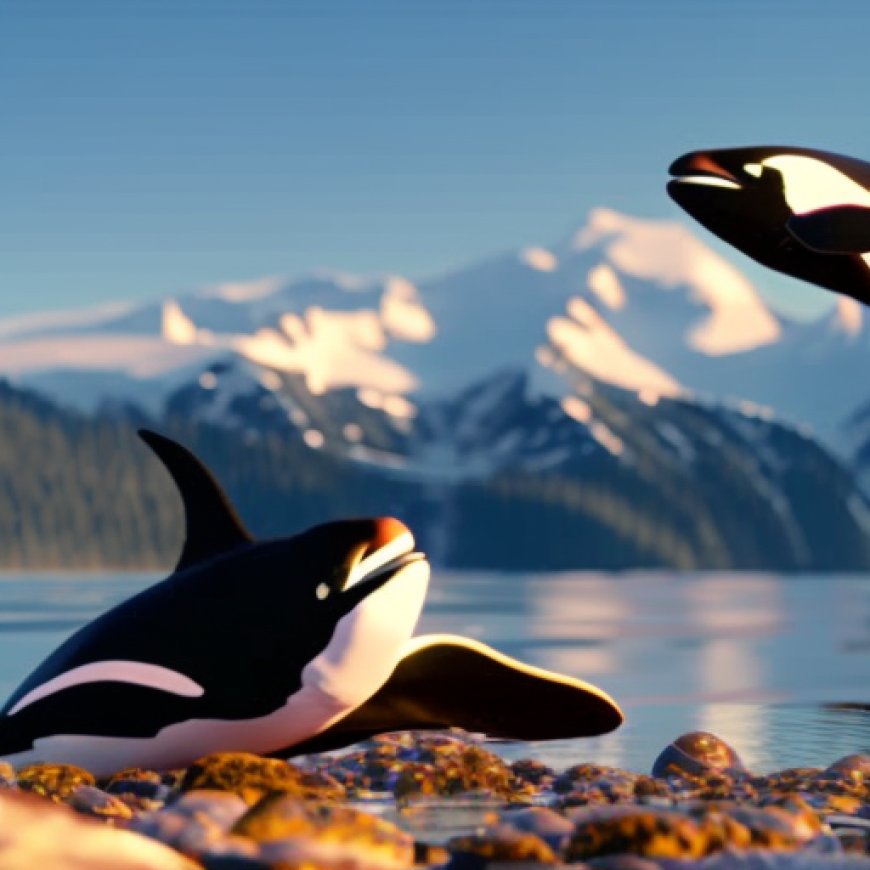Agreement Moves Washington’s Orcas, Salmon Toward Cyanide Pollution Protections


Center for Biological Diversity Reaches Agreement with EPA to Protect Imperiled Fish and Orcas from Cyanide Pollution

SEATTLE— The Center for Biological Diversity today reached an agreement with the U.S. Environmental Protection Agency that puts the agency on the path to protecting imperiled fish and southern resident killer whales from toxic cyanide in Washington state’s waters.
After more than 30 years of inaction, the agency will now have to ensure that water quality standards safeguard chinook and coho salmon, steelhead, bull trout, and the endangered orcas dependent on these fish.
“For decades the EPA has approved the release of dangerous levels of cyanide into Washington’s waters, severely harming our salmon and orcas, so this is a big step,” said Ryan Shannon, a senior attorney at the Center for Biological Diversity. “Now the agency has to finally analyze those dangers and make sure Washington’s water quality standards are strong enough to protect imperiled wildlife.”
Background
- Since 1993, the EPA has repeatedly approved water quality standards for cyanide pollution set by the Washington State Department of Ecology under the Clean Water Act without analyzing how those lax standards harm endangered and threatened species.
- The state allows mines, iron and steel facilities, publicly owned wastewater treatment facilities, and other industries to release dangerous levels of cyanide into Washington’s waters.
- The best available science indicates that Washington’s current cyanide pollution limits are harmful to endangered salmon and the orcas that depend on the fish as their primary food.
- Under the Endangered Species Act, the EPA’s approval of Washington state’s standards for pollutants, including cyanide, must be reviewed by the National Marine Fisheries Service and the U.S. Fish and Wildlife Service to ensure it doesn’t harm endangered species.
- The EPA initiated consultation on nationwide standards equivalent to those in Washington state in 2007 but backed out after federal wildlife agencies determined the standards would jeopardize various species.
Path to Protection
Today’s agreement requires the EPA to finally evaluate Washington state’s cyanide pollution standards and protect dwindling populations of native salmonids, steelhead, bull trout, and southern resident killer whales.
The EPA’s approval of Washington state’s cyanide standards never complied with its duty under the Endangered Species Act to ensure they do not jeopardize the species’ survival or harm their critical habitat.
“The arrival of baby orca L128 reminds us all that there is still hope to see a recovered and thriving population of orcas in Puget Sound,” said Andrew Hawley, senior staff attorney with the Western Environmental Law Center. “To achieve that goal, we need our federal and state agencies to take their responsibilities seriously to defend this iconic species. Today marks a long-overdue step in that direction.”
Implications of the Agreement
Because of the EPA’s failure, the state Department of Ecology continues to rely on outdated and inadequate cyanide standards when issuing permits to facilities that are asking to discharge cyanide. Today’s agreement puts the EPA on the path to updating those standards.
The 2022 lawsuit that spurred today’s agreement was filed in the U.S. District Court for the District of Columbia. The Center for Biological Diversity is represented by Ryan Shannon, as well as Andrew Hawley with the Western Environmental Law Center.
SDGs, Targets, and Indicators
| SDGs | Targets | Indicators |
|---|---|---|
| SDG 14: Life Below Water | Target 14.1: By 2025, prevent and significantly reduce marine pollution of all kinds, particularly from land-based activities, including marine debris and nutrient pollution | – No specific indicators mentioned in the article. |
| SDG 15: Life on Land | Target 15.1: By 2020, ensure the conservation, restoration, and sustainable use of terrestrial and inland freshwater ecosystems and their services, in particular forests, wetlands, mountains, and drylands, in line with obligations under international agreements | – No specific indicators mentioned in the article. |
| SDG 15: Life on Land | Target 15.5: Take urgent and significant action to reduce the degradation of natural habitats, halt the loss of biodiversity, and, by 2020, protect and prevent the extinction of threatened species | – No specific indicators mentioned in the article. |
| SDG 15: Life on Land | Target 15.9: By 2020, integrate ecosystem and biodiversity values into national and local planning, development processes, poverty reduction strategies, and accounts | – No specific indicators mentioned in the article. |
| SDG 15: Life on Land | Target 15.c: Enhance global support for efforts to combat poaching and trafficking of protected species, including by increasing the capacity of local communities to pursue sustainable livelihood opportunities | – No specific indicators mentioned in the article. |
Source: biologicaldiversity.org








